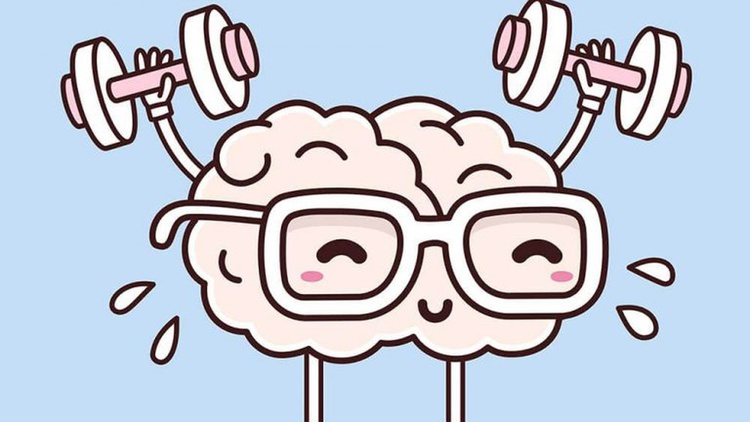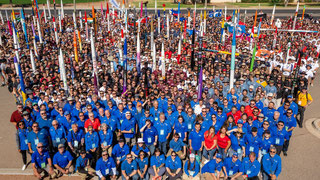Problem Statement
The physical and psychological injuries experienced by first responders (e.g. police, emergency medical services, firefighters, military, etc.) are unique to the realities of front-line emergency services. There is a real value to be added by creating tools to support first responders in staying healthy, and proactively addressing physical and psychological health issues in a timely manner. The Edmonton Police Service has lost a few of its employees to suicide in the past two decades, and would like to provide additional resources to bolster its current employee assistance program. There are talented, inspiring health practitioners tackling mental and physical health issues for front-line staff. There are brilliant minds in the technology field who are eager to make a real impact in improving the health of millions of first responders, globally. We’re asking you to help us support first responders.
Current Solutions
Current solutions are primarily manual and require self governance.
Pain Points
Recruit Engagement While a website may give them the basic information, they may require specialized answers or mentoring, and often want to hear directly from a first responder for questions like: • What level of physical fitness is required? • How can I prepare better for training? • What a day in the life might be like? • What to expect in recruit training? • How will a career in first response affect my family? Employee Physical Wellness Employees within the first responder industry want better ways to track their fitness and wellness goals. Emergency response is a demanding career and often the physical well-being of employees is directly connected to their success in the job. Employee Mental Wellness We know mental wellness is directly connected to physical wellness. That said, working within the emergency response industry can expose first responders to many challenging situations that take its toll on their mental well-being.
Overview
The physical and psychological injuries experienced by first responders (e.g. police, emergency medical services, firefighters, military, etc.) are unique to the realities of front-line emergency services. There is a real value to be added by creating tools to support first responders in staying healthy, and proactively addressing physical and psychological health issues in a timely manner. The Edmonton Police Service has lost a few of its employees to suicide in the past two decades, and would like to provide additional resources to bolster its current employee assistance program.
There are talented, inspiring health practitioners tackling mental and physical health issues for front-line staff. There are brilliant minds in the technology field who are eager to make a real impact in improving the health of millions of Canadians. We’re asking you to help us support first responders.
The Issue
The mental health crisis amongst first responders is well documented and accepted as an occupational hazard. The combination of stressful work environment, exposure to human tragedy and trauma, and rotating shift and sleep patterns, among other contributing factors, can lead to the development of numerous types of operational stress injuries, including depression and PTSD. First responders have an elevated risk for many mental health related issues when compared to the general population. Suicide rates in first responders have been identified as an issue in critical need of intervention and prevention.
Compounding these issues is the ongoing reluctance of first responders to self-identify as needing support. In their 2019 examination of police deaths by suicide, members of the Ontario Coroner’s expert panel on police officer deaths by suicide said: “a great number of police members will deny and shield the presence of mental health issues for as long as they can. The literature suggests that they may turn, in greater than average numbers, to alcohol and other substance use, and other often harmful self-medicating activities, in efforts to mitigate symptoms and to contain their underlying issues from exposure and treatment. Despite considerable investments by police services in their human resource departments, employee and family assistance programs (EFAP), and many other supportive options, many will avoid such doorways out of fear of exposure.” (‘Staying Visible, Staying Connected for Life,’ p. 7) Given that fear of exposure, this challenge aims to bring more resources into the hands of first responders via phone app, allowing them to explore issues on their own timeline and privately.
The need to assess and maintain mental and physical health during a first responder career must be ingrained in the organizational culture of any first response agency, from time of application through retirement. This app will be designed for that broad audience to maximize its impact and to assist in efforts to reduce the stigma surrounding mental health and operational stress injuries.
We want to deliver a comprehensive solution, made available to first responders that supports employees physically and psychologically through their entire careers and successfully into retirement. This app should provide evidence-based solutions and address the following statements:
- Recruit Engagement: Using physical fitness as a common thread, allow recruiters to connect, mentor, and answer questions about first responder requirements for entry and career path. Facilitate recruiters in the management of potential recruits within the first responder industries.
- Employee Physical Wellness: Using employee fitness as a foundation, allow employees in the emergency response industry to setup their wellness goals and objectives, and then track to see progress, add reminders, etc. It should also allow wellness staff within those services to engage with employees and assist when necessary.
- Employee Mental Wellness: Because mental well-being requires a specific set of resources, develop a comprehensive list available to first responders to use when they feel they need help. In this area, we are open to additional functions that may allow first responders to get help as quickly as possible. For example, a function that checks on a first responder daily and asks them questions to ultimately guide them to the right resource. It should also include information on operational stress injuries, supports for resiliency, and methods of normalizing mental health issues.
Pain Points
Recruit Engagement
Recruiters in every emergency response industry must find the best recruits possible for a challenging career. Potential applicants come from all walks of life with commitments that may not allow them to connect with recruiters during regularly scheduled events. While a website may give them the basic information, they may require specialized answers or mentoring, and often want to hear directly from a first responder for questions like:
- What level of physical fitness is required?
- How can I prepare better for training?
- What a day in the life might be like?
- What to expect in recruit training?
- How will a career in first response affect my family?
Employee Physical Wellness
Employees within the first responder industry want better ways to track their fitness and wellness goals. Emergency response is a demanding career and often the physical well-being of employees is directly connected to their success in the job. As such, services often have specific staff dedicated to ensuring both physical and mental wellness. With competing requirements for resources, this staff cannot reach everyone personally but using technology may be more successful in providing services to employees from wellness staff.
Employee Mental Wellness
We know mental wellness is directly connected to physical wellness. That said, working within the emergency response industry can expose first responders to many challenging situations that take its toll on their mental well-being. When facing these challenges, employees want ways to be able to reach out to the right professionals in an expedited manner regardless of time of day or day of the week. They need resources and information in a discreet and safe/anonymous manner which complements and aligns with the Edmonton Police Service Member Support Unit.
The Market Opportunity
First Responder mental and physical health issues are an international issue with growing attention and calls for solutions. Although local resources will be different, many of the underlying supports, global resources, and methods to address these issues are universal.
Challenge Structure and Overview
Phase 1
Phase 1 is open to everyone. In this ideation phase, participants are invited to submit their proposed approaches to developing or implementing an application that meets/exceeds the needs. Phase 1 winners will be selected based on how their submissions score against the evaluation criteria listed below. Note that proposed approaches must be demonstrable in order to advance. Conceptual approaches and those that are not technically mature enough to field trial are not of interest. Up to 5 of the Phase 1 participants will be selected to advance to Phase 2. Commercially available solutions are welcome to submit proposals and in such cases, instead of the prize money, a suitable license may be negotiated.
Phase 2
During Phase 2, each participant will field trial their proposed approach for a minimum of 90 days. The specific length of each individual field trial will be partly dependent on the trend line evidenced by data collected.
Time Frames (approximate)
Open to submissions September 8, 2020
Phase 1 submission deadline October 15, 2020 (before midnight)
Phase 1 Reviewing & Judging until October 30, 2020
Phase 1 winners announced November 2020
Phase 2 field trials start January 2021
Phase 2 Reviewing & Judging March 2021
Grand Prize winner announced Spring 2021
What’s in it for you?
- Up to $40,000 reward for being selected as the winning solution.
- If an existing application is available, suitable and mutually agreeable commercial terms will be negotiated in lieu of the prize money
- It is possible that multiple solutions are selected, in which case, the prize money will be split appropriately
What’s in it for the EPF and the CSA?
- The fitness and mental wellness of EPS members has a direct impact on how members increase public safety for citizens.
- The App intends to utilize the modern medium of communication via technology to attract, mentor and engage qualified applicants.
- The development of this app will assist with the EPS’ Recruit Applicant Mentorship Program (RAMP), Run with Recruiter (RWR) program and the Recruit Mentoring Academy. These approaches are limited by physical constraints and schedules, but an app with common FAQs and resources to support application attempts would streamline the EPS’ recruiting process.
- The digital medium will allow the EPS to increase its radius of influence. EPSFIT will provide Employee and Org. Wellness Branch a tool that is accessible by employees 24/7.
Stakeholders
- Edmonton Police Service
- ATB Financial (Financial Sponsor)
- Mental Health Foundation (In Kind Sponsor)
- The City of Edmonton
- Edmonton Police Foundation (Financial Sponsor)
- Edmonton Police Association
Evaluation approach and criteria
Phase 1 submissions will be judged by a panel of ATB, EPF, EPS and other experts. They will be evaluated using the criteria and weighting listed below.
Phase 2 field trial results will be evaluated by appropriate stakeholders and by a committee of research experts, independent of the Community Solutions Accelerator (CSA) Governance Board., They will determine whether the results of a field study align with the prize thresholds identified above. The committee will be formed by the CSA Governance Board and include members from the stakeholders identified.
Upon completion of a field trial, methodology and results will be posted on-line – subject to approval from appropriate stakeholders and limited to non-financial data only.
Evaluation Criteria (subject to change without notice)
Category: Innovation
Description: Demonstrates creativity and novelty - Ideas that are variations of known approaches vs completely new Weighting: 35%
Category: Technical Maturity
Description: Likelihood that approach can be demonstrated in a field trial within 4 weeks
Weighting: 25%
Category: Cost
Description: Cost to implement approach
Weighting: 20%
Category: Adaptability
Description: Versatility and adaptability across sectors (e.g. law enforcement, fire fighters, etc.)
Weighting: 20%
Data, Info and other assistance available
Appropriate data may be provided during the challenge period.









